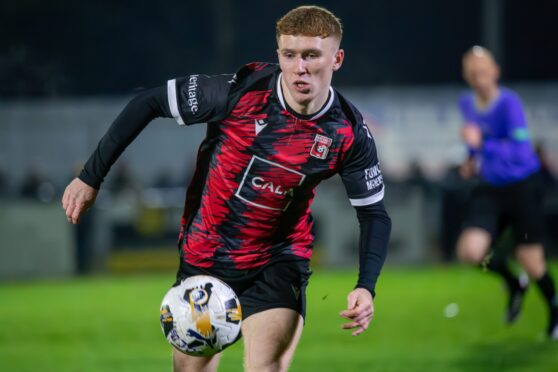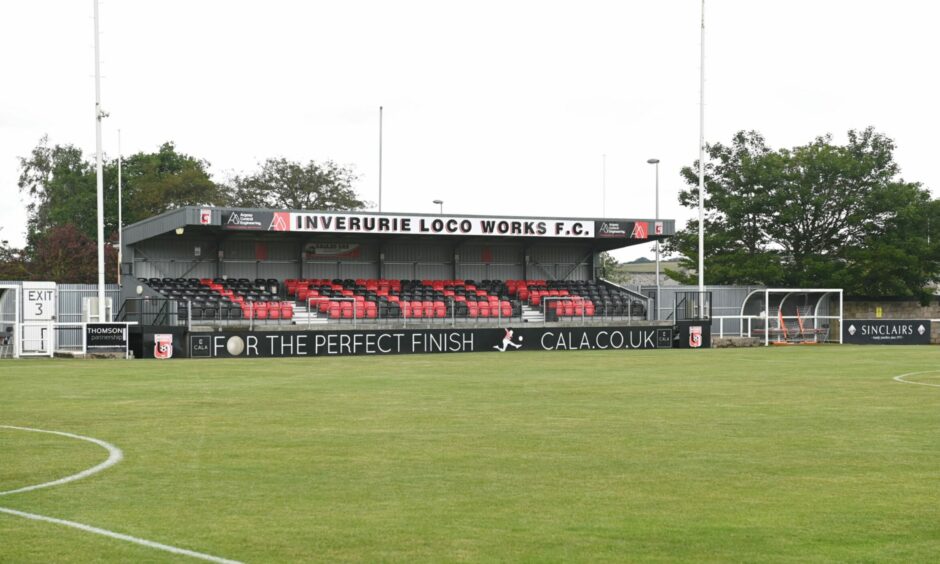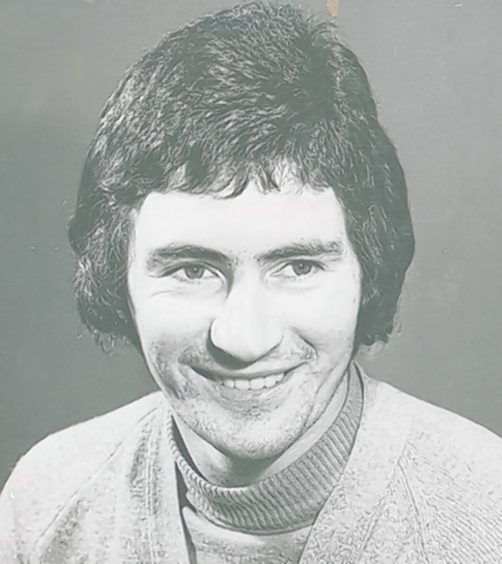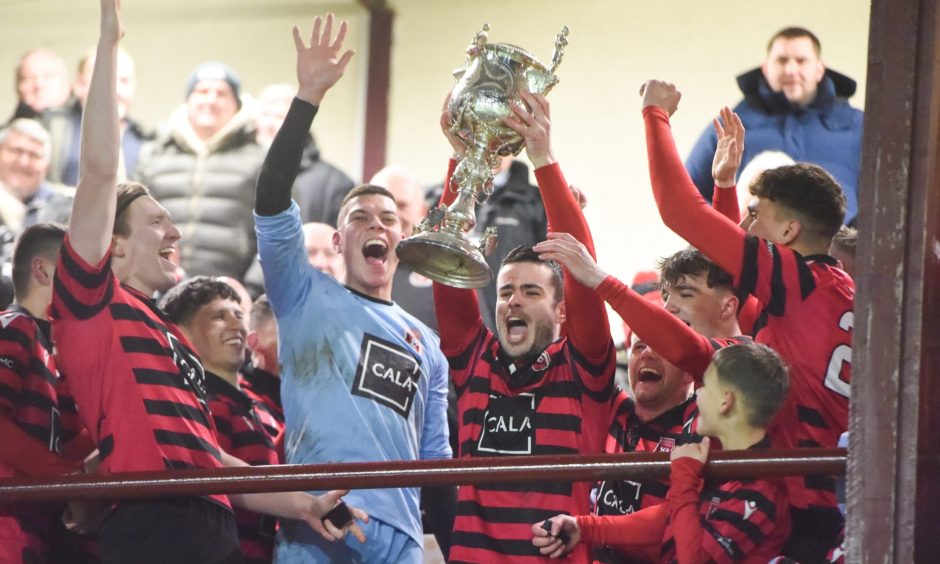Inverurie Locomotive Works FC were formed at a meeting of workers from the Great North of Scotland Railway on Friday August 22 1902.
The company had locomotive, carriage and wagon workshops in town, and the club play in red and black stripes.
The fire-red and coal-black colours are intended to symbolise the power behind locomotives.
Their away strip for the 2024-25 campaign is white and grey stripes.
Fire and Coal, the club’s new monthly digital programme, was launched in December 2024.
Harlaw Park has been home since day one
The club has played at Harlaw Park in Inverurie since its formation with their home evolving from an open field to the fully enclosed ground that has hosted schoolboy internationals and UEFA women’s matches.
Locos’ first Scottish Junior Cup tie was a home loss against Abergeldie in 1909.
The club’s first trophy win was the Lovie Shield in 1914 with a victory in the final against East End.
The club won its first championship in the 1925-26 Aberdeen and District Junior League campaign, finishing the season three points ahead of Richmond, Argyle and East End.
The 1928-29 season was regarded as the most successful of the club’s junior days with success in the Aberdeen and District League, the League Cup, the McLeman Cup, the Archibald Cup and the Duthie Cup.
The ground has an overall capacity of 2,500 with 175 seated.
The club spent £75,000 on upgrading Harlaw Park after gaining entry into the Highland League.
Nicknamed The Locos, but also known as The Railwaymen, Inverurie played junior football for 99 years and can count former Scotland manager Andy Beattie as a former player.
Beattie joined Locos in 1930 and won six championships with the club before moving to Preston North End in 1935 for a fee of £135. He spent 12 years with Preston and went on to play for Scotland.
He managed Barrow, Stockport County and Huddersfield Town before taking charge of Scotland in 1954, including for the World Cup finals in Switzerland. He resigned after saying he was left with an impossible task with only 13 players available for his four-game stint.
Beattie took charge of Scotland again in 1959 but resigned the following year due to his commitments as Nottingham Forest boss. He ended his managerial career with spells at Plymouth, Wolves and Notts County.
Locos’ 1962 Scottish Junior Cup tie win against Shettleston was the first ever tie in the tournament to be televised.
In May 1981 the Banchory Golf Club clubhouse was re-located to Harlaw Park as the club’s new social club. Floodlights, which were surplus to requirements at Aberdeen Airport, and new dugouts were installed in 1983.
Locos joined Highland League in 2001
Having come up short in several attempts, Locos were eventually successful in their application to join the Highland League in 2001 after Elgin and Peterhead had resigned to join the Scottish League.
Their first game was a goalless draw with Clach, while Stuart McKay has the honour of scoring the first goal for the club in the Highland League.
They finished seventh in their first campaign, in 2001-02.
Locos finished second in the 2004-05 season and achieved runners-up finishes again in 2006 and 2007.
Since joining the ranks of the Highland League Locos have won nine trophies.
Their first taste of silverware came in the 2003-04 season when they won the Aberdeenshire Shield thanks to a 4-1 victory against Deveronvale.
Their most recent trophy was won in 2024 when Dean Donaldson guided Locos to a penalty shootout win over league champions Buckie Thistle in the final of the Evening Express Aberdeenshire Cup at Kynoch Park.
Midfielder Neil McLean, who made a record 559 appearances for Locos, retired in 2022.
He was part of the Locos team which enjoyed a memorable run in the 2009 Scottish Cup which culminated in a 3-0 home defeat against top flight Motherwell. The fourth round tie was postponed on four occasions before eventually getting the go ahead.
The Railwaymen ‘more than a football club’
Chairman Mike Macaulay is proud of the club’s role in the community and says Locos pride themselves in being more than a football club.
Since 2017, Locos have provided support to charities and good causes in excess of £200,000.
The club places great stock in its youth academy and introduced a women’s team in 2023.
Macaulay said: “The sign above our door says ‘Inspiring A Community To Love Football’ and this is a mantra we firmly believe in.”
Season tickets for the 2024-25 campaign were priced at £120 for adults and £60 for concessions.




Conversation